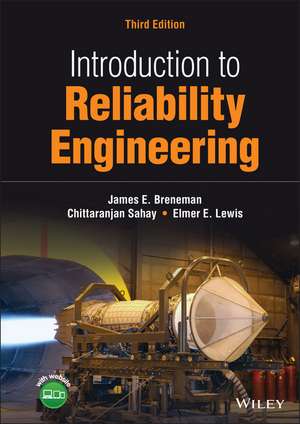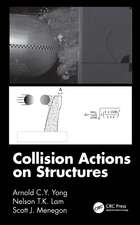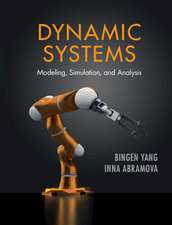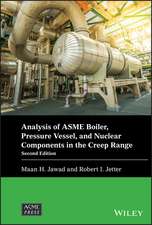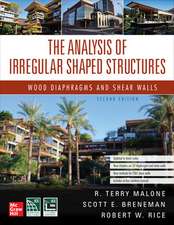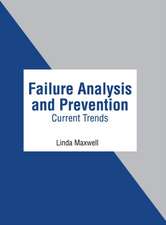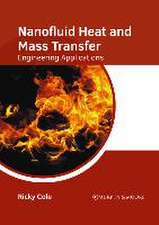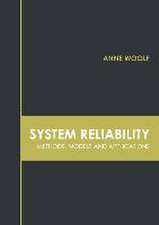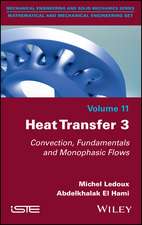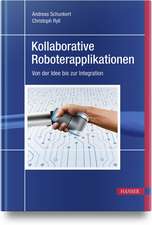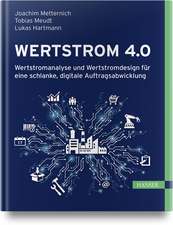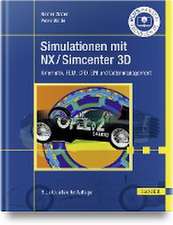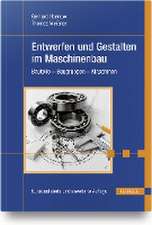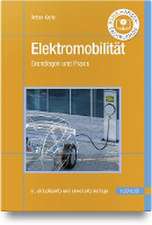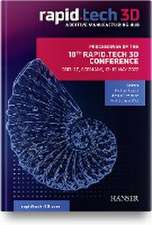Introduction to Reliability Engineering, 3rd Editi on
Autor J E Brenemanen Limba Engleză Hardback – 21 apr 2022
Preț: 775.83 lei
Preț vechi: 1020.83 lei
-24% Nou
Puncte Express: 1164
Preț estimativ în valută:
148.47€ • 161.22$ • 124.72£
148.47€ • 161.22$ • 124.72£
Carte disponibilă
Livrare economică 02-16 aprilie
Livrare express 18-22 martie pentru 49.71 lei
Preluare comenzi: 021 569.72.76
Specificații
ISBN-13: 9781119640561
ISBN-10: 1119640563
Pagini: 640
Dimensiuni: 186 x 271 x 37 mm
Greutate: 1.07 kg
Ediția:3rd Edition
Editura: Wiley
Locul publicării:Hoboken, United States
ISBN-10: 1119640563
Pagini: 640
Dimensiuni: 186 x 271 x 37 mm
Greutate: 1.07 kg
Ediția:3rd Edition
Editura: Wiley
Locul publicării:Hoboken, United States
Cuprins
1 INTRODUCTION
1.1 Reliability Defined
1.2 Performance, Cost and Reliability
1.3 Quality, Reliability and Safety Linkage
1.4 Quality, Reliability and Safety Engineering Tasks
1.5 Preview
2 PROBABILITY AND DISCRETE DISTRIBUTIONS
2.1 Introduction
2.2 Probability Concepts
Sample Space
Outcome
Event
Probability Axioms
More than two events
Combinations and Permutations
2.3 Discrete Random Variables
Properties of Discrete Variables
The Binomial Distribution
The Poisson Distribution
Confidence Intervals
Motivation for Confidence Intervals
Introduction to Confidence Intervals
Binomial Confidence Intervals
Cumulative sums of the Poisson Distribution (Thorndike Chart)
3 Exponential Distribution and Reliability Basics
3.1 Introduction
3.2 Reliability Characterization
Basic definitions
The Bathtub curve
3.3 Constant Failure Rate model
The Exponential Distribution
Demand failures
Time determinations
3.4 Time Dependent Failure rates
3.5 Component Failures and Failure Modes
Failure mode rates
Component counts
3.6 Replacements
3.7 Redundancy
Active and Standby Redundancy
Active Parallel
Standby Parallel
Constant Failure Rate Models
3.8 Redundancy limitations
Common-mode failures
Load sharing
Switching & Standby failures
Cool, Warm and Hot Standby
3.9 Multiply Redundant Systems
1/N Active Redundancy
1/N Standby Redundancy
m/N Active Redundancy
3.10 Redundancy Allocation
High and Low level redundancy
Fail-safe and Fail-to-Danger
Voting Systems
3.11 Redundancy in Complex Configurations
Serial-Parallel configurations
Linked configurations
4 Continuous Distributions- Part 1 Normal & Related Distributions
4.1 Introduction
4.2 Properties of Continuous Random variables
Probability Distribution Functions
Characteristics of a Probability Distribution
Sample Statistics
Transformation of Variables
4.3 Empirical Cumulative Distribution Function
4.4 Uniform Distribution
4.5 Normal and Related Distributions
The Normal Distribution
Central Limit Theorem
The Central Limit Theorem in Practice
The Log Normal Distribution
Log Normal Distribution from a Physics of Failure Perspective
4.6 Confidence Intervals
Point & Interval Estimates
Estimate of the Mean
Normal & Lognormal parameters
5 Continuous Distributions- Part 2 Weibull & Extreme Value Distributions
5.1 Introduction
The "weakest link" theory from a Physics of Failure point of view
Uses of Weibull and Extreme Value Distributions
Other Considerations
Age parameters and sample sizes
Engineering Changes, Maintenance Plan Evaluation and Risk Prediction
Weibulls with cusps or curves
System Weibulls
No failure Weibulls
Small sample Weibulls
5.2 Statistics of the Weibull Distribution
Weibull "Mathematics"
The Weibull Probability Plot
Probability Plotting Points--Median Ranks
How to do a "Weibull Analysis"
Weibull plots and their estimates of b, h
The 3-Parameter Weibull didn't work, what are my choices?
The data has a "dogleg" bend or cusp when plotted on Weibull paper.
Steep Weibull slopes (ß's) may hide problems.
Low Time Failures and close Serial numbers---Batch problems
Maximum Likelihood Estimates of ß and eta
Weibayes Analysis
Weibayes background
Weibull Analysis with failure times only and unknown times on remaining population
Shifting Weibull Procedure
Confidence bounds and the Weibull Distribution
Arbitrary Censored Data
The Weibull Distribution in a System of Independent failure modes
5.3 Extreme Value Distributions
Smallest & Largest Extreme Value distributions
Extreme Value and Weibull Distribution Point Estimates & Confidence Intervals
5.4 Introduction to Risk analysis
Risk Analysis "Mathematics"
Supplement 1- Weibull derived from weakest link theory
Supplement 2: Comparing two distributions using Supersmith(TM)
6 RELIABILITY TESTING
6.1 Introduction
6.2 Attribute Testing (Binomial Testing)
The Classical Success Run
Zero Failure Attribute Tests
Non-ZERO Failure Attribute Tests
6.3 Constant Failure Rate Estimates
Censoring on the Right
MTTF Estimates
Confidence Intervals
6.4 Weibull Substantiation and Reliability Testing
Zero-Failure Test Plans for Substantiation Testing
Weibull Zero-Failure test Plans for Reliability Testing
Designing the Test Plan
Total Test Time
Why not Simply Test to Failure?
6.5 How to Reduce Test Time
Run (simultaneously) more test samples than you intend to fail
Sudden Death Testing
Sequential Testing
6.6 Normal & Lognormal Reliability Testing
6.7 Accelerated Life Testing
Compressed Time Testing
Advanced Stress Testing-Linear & Acceleration Models
Linear Model Stress testing
Advanced Stress Testing - Acceleration Models
The Arrhenius Model
The Inverse Power Law Model
Other Acceleration Models
6.8 Reliability Enhancement Procedures
Reliability Growth Modeling & Testing
Calculation of Reliability Growth parameters
Goodness of Fit tests for Reliability Growth Models
Environmental Stress Screening
What "Screens" are used for ESS?
Thermal cycling
Random Vibration
Other Screens
Highly Accelerated Life Tests
Highly Accelerated Stress Screening
Supplement 1 Substantiation Testing: Characteristic Life multipliers for Zero failure Test at 80%, 90%, 95%, 99% Confidence
Supplement 2 Substantiation Testing Tables for Zero failure Test at 80%, 90%, 95%, 99% Confidence
Supplement 3 CRITICAL VALUES FOR CRAMER-VON MISES GOODNESS-OF-FIT TEST
Supplement 4 Other Reliability Growth Models
Supplement 5 Chi-Square Table
7 Failure Modes & Effects Analysis (FMEA) - Design & Process
7.1 Introduction
7.2 Functional FMEA
7.3 Design FMEA
Design FMEA Procedure
7.4 Process FMEA(PFMEA)
7.5 FMEA Summary
FMEA Outputs
FMEA Pitfalls that can be prevented
Supplement 1 Shortcut tables for stalled FMEA Teams
Supplement 2 Future changes in FMEA Approaches
Supplement 3 DFMEA and PFMEA Forms
8 LOADS, CAPACITY, AND RELIABILITY
8.1 Introduction
8.2 Reliability with a Single Loading
Load Application
Definitions
8.3 Reliability and Safety Factors
Normal Distributions
Lognormal Distributions
Combined Distributions
8.4 Repetitive Loading
Loading Variability
Variable Capacity
8.5 The Bathtub Curve--Reconsidered
Single Failure Modes
Combined Failure Modes
Supplement 1: The Dirac Delta Distribution
9 MAINTAINED SYSTEMS
9.1 Introduction
9.2 Preventive Maintenance
Idealized Maintenance
Imperfect Maintenance
Redundant Components
9.3 Corrective Maintenance
Availability
Maintainability
9.4 Repair: Revealed Failures
Constant Repair Rates
Constant Repair Times
9.5 Testing and Repair: Unrevealed Failures
Idealized Periodic Tests
Real Periodic Tests
9.6 System Availability
Revealed Failures
Unrevealed Failures
10 FAILURE INTERACTIONS
10.1 Introduction
10.2 Markov Analysis
Two Independent Components
Load-Sharing Systems
10.3 Reliability with Standby Systems
Idealized System
Failures in the Standby State
Switching Failures
Primary System Repair
10.4 Multicomponent Systems
Multicomponent Markov Formulations
Combinations of Subsystems
10.5 Availability
Standby Redundancy
Shared Repair Crews
Markov Availability-Advantages & Disadvantages
11 SYSTEM SAFETY ANALYSIS
11.1 Introduction
11.2 Product and Equipment Hazards
11.3 Human Error
Routine Operations
Emergency Operations
11.4 Methods of Analysis
Failure Modes Effects and Criticality Analysis (FMECA)
Event Trees
11.5 Fault Trees
Fault-Tree Construction
Nomenclature
Fault Classification
Fault Tree Examples
Direct Evaluation of Fault Trees
Qualitative Evaluation
Quantitative Evaluation
Fault-Tree Evaluation by Cut Sets
Qualitative Analysis
Quantitative Analysis
11.6 Reliability/Safety Risk Analysis
APPENDICES
A USEFUL MATHEMATICAL RELATIONSHIPS
B BINOMIAL CONFIDENCE CHARTS
C STANDARD NORMAL CDF
D NONPARAMETRIC METHODS AND PROBABILITY PLOTTING
D1 Introduction
D2 Nonparametric Methods for Probability Plotting
D3 Parametric Methods
D4 Goodness-of-Fit
Supplement 1 Further Details of Weibull Probability plotting
Supplement 2 Median Rank adjustment for SUSPENDED TEST ITEMS
Supplement 3 Generating a Probability Plot in MINITAB
ANSWERS TO ODD-NUMBERED EXERCISES
INDEX
Notă biografică
James E. Breneman established and headed the Engineering Technical University at Pratt and Whitney, which provided more than 450,000 hours of instruction to employees during his tenure. Now retired, Breneman has taught many public course offerings for the ASQ Reliability & Risk Division. In 2018 he was awarded the Eugene L. Grant Medal for outstanding leadership in educational programs in quality. Chittaranjan Sahay holds the Vernon D. Roosa Distinguished Professor Chair in Manufacturing and Professorship in Mechanical Engineering at the University of Hartford, where he has held various offices including Associate Dean and Director of the Graduate Programs of the College of Engineering, Technology, and Architecture, and Chairman of the Mechanical Engineering Department. Elmer E. Lewis is Professor of Mechanical Engineering at Northwestern University's McCormick School of Engineering and Applied Science. He has held appointments as Visiting Professor at the University of Stuttgart and as Guest Scientist at the Nuclear Research Center at Karlsruhe, Germany. He has been a frequent consultant to Argonne and Los Alamos National Laboratories as well as a number of industrial firms.
